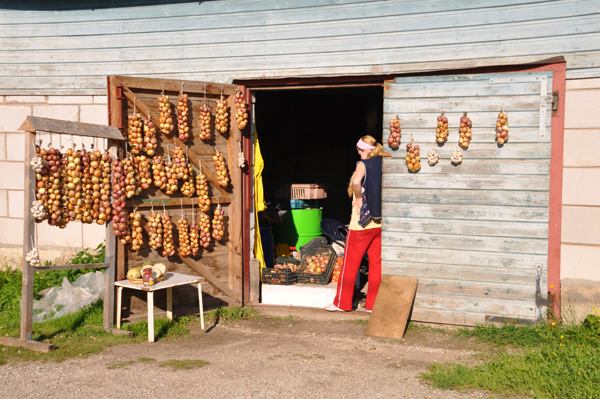Travel News
The Old Believers of Lake Peipsi: Uncovering the Secretive Culture
With a history that has seen its share of tears, perhaps it is not surprising that onions are the chief crop of the people known as Old Believers who live along the western shores of Lake Peipsi in Estonia. Members of this once-closed community peeled back layers of their lineage here for Meg Pier, sharing how events four centuries ago shaped an insular society that is now welcoming outsiders.
On what is known as the “Onion Route,” a stretch of gravel road that strings together several small villages.
I met the ancestors of a 17th century contingent of Russian refugees who had fled being persecuted for their faith. Amidst green garden plots and brightly painted houses, each fronted by humble stands overflowing with onions, I learned the story of these exiles, who in 1653 found safe haven in the isolated borderland between Russia and Estonia along Europe’s fifth largest lake.
The History of the Old Believers
During the Communist era, eight of the 31 square kilometers inhabited by the Old Believers along Lake Peipsi were cultivated as onion fields; today that’s down to two. Under the Soviet regime,
the Old Believers did a booming business selling onions at the Leningrad market. Today, with relations between Russia and Estonia less cozy, the market is mainly for tourists.

It’s said that each Old Believer household has a spade and an icon for each member of the family. At the Kolkja Old Believers Museum, which opened in 1998, Anna Portnova explained why, a history lesson that also for the community’s historically reserved attitude toward outsiders.
In Tsarist times, a leader of the Russian Orthodox Church came to power and initiated reforms that included changes to the sacred texts, rites and practices, including the abolition of low, sweeping bows and changing the manner of crossing oneself from using two fingers to three. The government imprisoned and executed those who resisted the changes, spurring the exodus of Old Believers to Lake Peipsi. In the 20th century, members of these communities faced deportations and burned churches during the occupation of Estonia by German Nazis and Soviet Communists.












